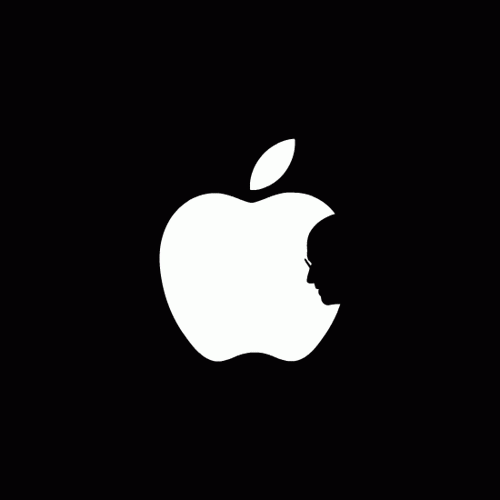 Ο Στιβ Τζομπς πέθανε την περασμένη Τετάρτη (ξημερώματα Πέμπτης για εμάς), και όταν συμβαίνουν τέτοιας σημασίας γεγονότα ένα είναι το σίγουρο και το προσφιλέστερο σε εμένα παραπροϊόν: Κείμενα. Πολλά κείμενα από πολλούς ανθρώπους και με πολλές διαφορετικές προσεγγίσεις. Παρακάτω μάζεψα τα 10 καλύτερα που θα σου δώσουν μια καλή εικόνα για τον άνθρωπο και τη σημασία του:
Ο Στιβ Τζομπς πέθανε την περασμένη Τετάρτη (ξημερώματα Πέμπτης για εμάς), και όταν συμβαίνουν τέτοιας σημασίας γεγονότα ένα είναι το σίγουρο και το προσφιλέστερο σε εμένα παραπροϊόν: Κείμενα. Πολλά κείμενα από πολλούς ανθρώπους και με πολλές διαφορετικές προσεγγίσεις. Παρακάτω μάζεψα τα 10 καλύτερα που θα σου δώσουν μια καλή εικόνα για τον άνθρωπο και τη σημασία του:
1. Η Ζωή Του Στιβ Τζομπς (από το Wired)
Ένα πλήρες και αναλυτικό timeline της δουλειάς του από έναν άνθρωπο που έζησε την καριέρα του από κοντά.
His accomplishments were unmatched. People who can claim credit for game-changing products — iconic inventions that become embedded in the culture and answers to Jeopardy questions decades later — are few and far between. But Jobs has had not one, not two, but six of these breakthroughs, any one of which would have made for a magnificent career. In order: the Apple II, the Macintosh, the movie studio Pixar, the iPod, the iPhone and the iPad.
2. Ο Καρκίνος Που Τον Σκότωσε (από το Time)
Ένα από τα πιο κοινά σχόλια που ακούστηκαν είχαν να κάνουν με την αιτία του θανάτου του και το γεγονός ότι ήταν πλούσιος. “Όποιος και να είσαι”, λένε και γράφουν, “δε γλιτώνεις”. Αυτό είναι μια μπούρδα. Ασθενείς με καρκίνο στο πάγκρεας συνήθως πεθαίνουν μέσα σε πέντε μήνες. Ο επίσης πλούσιος και διάσημος ηθοποιός Πάτρικ Σουέιζι άντεξε είκοσι. Ο Στιβ Τζομπς έζησε με αυτή τη μορφή καρκίνου για εφτά χρόνια.
In 2004, Jobs underwent surgery to remove the cancer from his pancreas. In 2009, after taking another leave of absence from Apple, Jobs had a liver transplant in an effort to retain as much of his organ function as possible after his cancer had spread beyond the pancreas. In January, he took a third leave from the company before resigning as CEO in August.
3. Ο Στιβ Τζομπς και το Design (από το Γκλεν Λόουρι, διευθυντή του MoMA, στο CNN)
Jobs’ insistence on objects whose look paralleled their use — not in the modernist sense of form following function but in his commitment to making devices that looked as good as they functioned — made owning an Apple a deeply personal statement. And his relentless commitment to getting the details right, the shape of a screen, for instance, or the appearance and click of a keyboard, the size and location of the track pad, or something as simple as an on/off switch or a magnetic power cord connection, set a standard that every competitor has tried to match.
4. Η Φιλοσοφία Του Μέσα Από Την Ιστορία Της Pixar (από τον New Yorker)
In typical fashion, Jobs saw this as a design problem. He began with the mailboxes, which he shifted to the atrium. Then he moved the meeting rooms to the center of the building, followed by the cafeteria and the coffee bar and the gift shop. But that still wasn’t enough; Jobs insisted that the architects locate the only set of bathrooms in the atrium.
5. H Ανάμνηση Ενός Πιτσιρικά Apple Fan (με πολλές φωτογραφίες)
6. Η Σκοτεινή Πλευρά Του Στιβ Τζομπς (φυσικά από το Gawker)
Για όσους κουράστηκαν με τις αγιογραφίες, ή γι’ αυτούς που η μαύρη τους ψυχή επιζητεί τον κακό λόγο και τη μιζέρια ακόμα και όταν ο άλλος πεθαίνει, ορίστε, όλα τα κακά, στραβά κι ανάποδα του ανδρός.
Jobs regularly belittled people, swore at them, and pressured them until they reached their breaking point. In the pursuit of greatness he cast aside politeness and empathy. His verbal abuse never stopped.
7. Εκείνη Η Ιστορία Με Το Κλεμμένο iPhone (από τον Μπράιαν Λαμ του Gizmodo)
An hour after the story went live, the phone rang and the number was from Apple HQ. I figured it was someone from the PR team. It was not.
“Hi, this is Steve. I really want my phone back.”
He wasn’t demanding. He was asking. And he was charming and he was funny. I was half-naked, just getting back from surfing, but I managed to keep my shit together.
8. Πώς Έκανε Το Επιχειρείν Σέξι (από τον Πολ Καρ, στους New York Times)
No one commanded the respect of the press like Mr. Jobs. I can remember a visit he made to The New York Times when the first iPad came out. The Times is a notoriously blasé place, where heads of state have been known to come and go without raising an eyebrow. But when Mr. Jobs came, the effect was electric. (…) We were all seated when he came in, in part because there were medical reasons for him to avoid grip and grins, but the whole rock star thing was in high effect. And then it was on. No one asks a casual question of Steve Jobs.
9. Μια Βόλτα Με Τον Γουόλτ Μόσμπεργκ (από τη Wall Street Journal)
After his liver transplant, while he was recuperating at home in Palo Alto, Steve invited me to catch up. It turned into a three-hour visit, punctuated by a walk to a nearby park that he insisted we take, despite my nervousness about his frail condition. He explained that he walked each day, and that each day he set a farther goal for himself, and that, today, the neighborhood park was his goal. As we were walking and talking, he suddenly stopped, not looking well. I begged him to return to the house, noting that I didn’t know CPR and could visualize the headline: “Helpless reporter lets Steve Jobs die on the sidewalk.” But he laughed, and refused, and, after a pause, kept heading for the park.
10. Φτιάχνοντας Μαγεία Από Παραμορφωμένα Κινέζικα Χέρια (από τους New York Times)
I have traveled to southern China and interviewed workers employed in the production of electronics. I spoke with a man whose right hand was permanently curled into a claw from being smashed in a metal press at Foxconn, where he worked assembling Apple laptops and iPads. I showed him my iPad, and he gasped because he’d never seen one turned on. He stroked the screen and marveled at the icons sliding back and forth, the Apple attention to detail in every pixel. He told my translator, “It’s a kind of magic.”
Επιπλέον, μπορείς να δεις αυτά που έχω γράψει κι εγώ για το θέμα ως τώρα:
To αναπόφευκτο λυπητερό κείμενο για το θάνατο του Στιβ Τζομπς
Η διάσημη διαφήμιση για “the crazy ones” με σπικάζ του ίδιου
Οι 10 μεγάλες αποτυχίες του Στιβ Τζομπς
Ο Στιβ Τζομπς στη σκηνή: Ένα μοντάζ
Ο Στίβεν Κολμπέρ τον αποχαιρετά
Στο εξώφυλλο του νέου New Yorker
Μαθήματα μάρκετινγκ με βερμούδα και σανδάλια
ΕΠΙΛΟΓΟΣ-CLIFFHANGER
Ωστόσο, αν και όλα τα παραπάνω δίνουν εικόνες και προοπτική και ενόραση στο θέμα από πολλές ενδιαφέρουσες πτυχές, φοβάμαι ότι δεν έχω διαβάσει ακόμα το ένα συμπυκνωμένο κείμενο που θα συνοψίσει τη σημασία του συμβάντος και του ανθρώπου, και που θα απαντήσει και στο άλλο σίγουρο παραπροϊόν τέτοιων γεγονότων (τις μπούρδες). Το κείμενο του Wired είναι αναλυτικό και πλήρες, και περιέχει όλα όσα χρειάζεται για να καταλάβει κανείς ποιά ήταν η σημασία του στ’ αλήθεια, αλλά δεν το σχηματοποιεί εύληπτα, είναι τα επιχειρήματα (όλα, αναλυτικά) χωρίς το συμπέρασμα.
Ξέρω εκ των προτέρων ότι θα αποτύχω, αλλά μιαν απόπειρα θα την κάνω.

